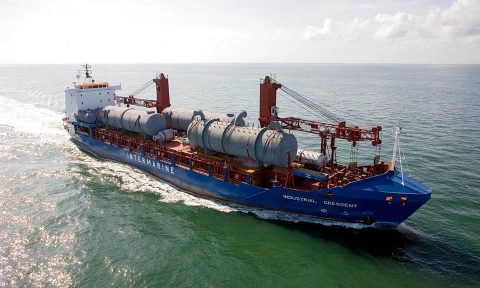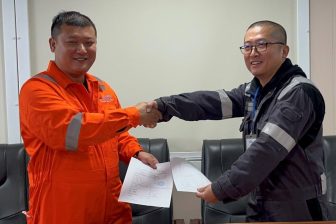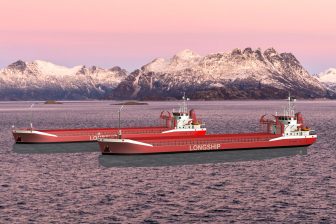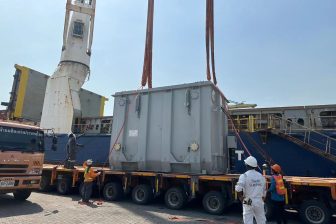
Structural simulation models increase efficiency in supercargo transport
The structural assessment process for heavy-lift transport projects on multi-purpose vessels can vastly benefit from existing finite element (FE) models, says DNV-GL. The simulation model can help to quickly determine if and how super heavy cargoes can be transported.
Structural simulation models generated during the design phase of a vessel can and should be reused throughout the operational lifetime of the ship, DNV-GL says. “Doing so not only enables a more sophisticated approach to technical assessments but also significantly reduces the cost of modelling and generating load cases.”
In recent years, the multi-purpose vessel segment has seen a growing trend towards individualized transport jobs in the heavy-lift and project cargo businesses, with the items carried growing in size and weight. This development has been driven by a general tendency to minimize the scope of on-site final assembly work to mitigate economic and quality risks.
“Ensuring the structural integrity and safety of the cargo, as well as the ship itself, are core concerns for the shipper, the vessel owner and operator, and their underwriters”, explains Olaf Doerk, Head of Advisory West Europe at DNV GL Maritime. “Project-specific strength assessments focusing on proper sea-fastening as well as the structural integrity of the vessel and its cargo are therefore standard procedure in heavy-lift projects. In many cases, however, the lack of a suitable structural finite elements (FE) model for the strength assessment is a bottleneck which can cause delays and additional costs.”
3D FE models improve assessments
Considering the variety of heavy-lift and project cargo jobs, a global 3D FE model of the entire vessel offers the greatest flexibility and coverage for structural assessment, DNV-GL states. Traditional global FE models with web frame spacing as a typical element size do not provide the required level of detail and structural resolution, especially when assessing the double-bottom area, the company adds.
A modelling approach initially developed in a joint development project by DNV GL and major industry partners, called Advanced Whole Ship Analysis (AWSA), can help overcome this issue. AWSA combines global strength and cargo hold analysis based on a fine mesh, in example frame spacing as typical element size, with global FE models.
“Reusing these fine-mesh global structural FE models from the design phase for strength assessment calculations in heavy-lift projects during the operations phase is a very cost-efficient – if technically sophisticated – approach,” says Doerk. “Its flexibility makes it suitable for a wide range of applications, from simple double-bottom checks through to full-scale global strength analyses accounting for specific loading and sailing conditions.”
Intermarine
When Intermarine was considering carrying an extremely heavy load on the deck of one of their heavy-lift vessels, the engineers had to quickly do a quite complex structural analysis to check whether such an unusually heavy cargo unit could be carried without compromising the safety of the ship or the cargo itself.
“We made use of an existing FE model of one of our heavy-lift vessels, whose files from the newbuilding phase had been stored by DNV GL’s advisory unit. This enabled us to carry out the strength assessment of the cargo hold area with different reinforcement options in an efficient way”, says Frank Fischer, Managing Director of Intermarine. “Experts from DNV GL’s advisory section conducted the analysis in close dialogue with our cargo engineers. Based on the solution found, we could apply for a unique cargo transport job with confidence in safety.”




